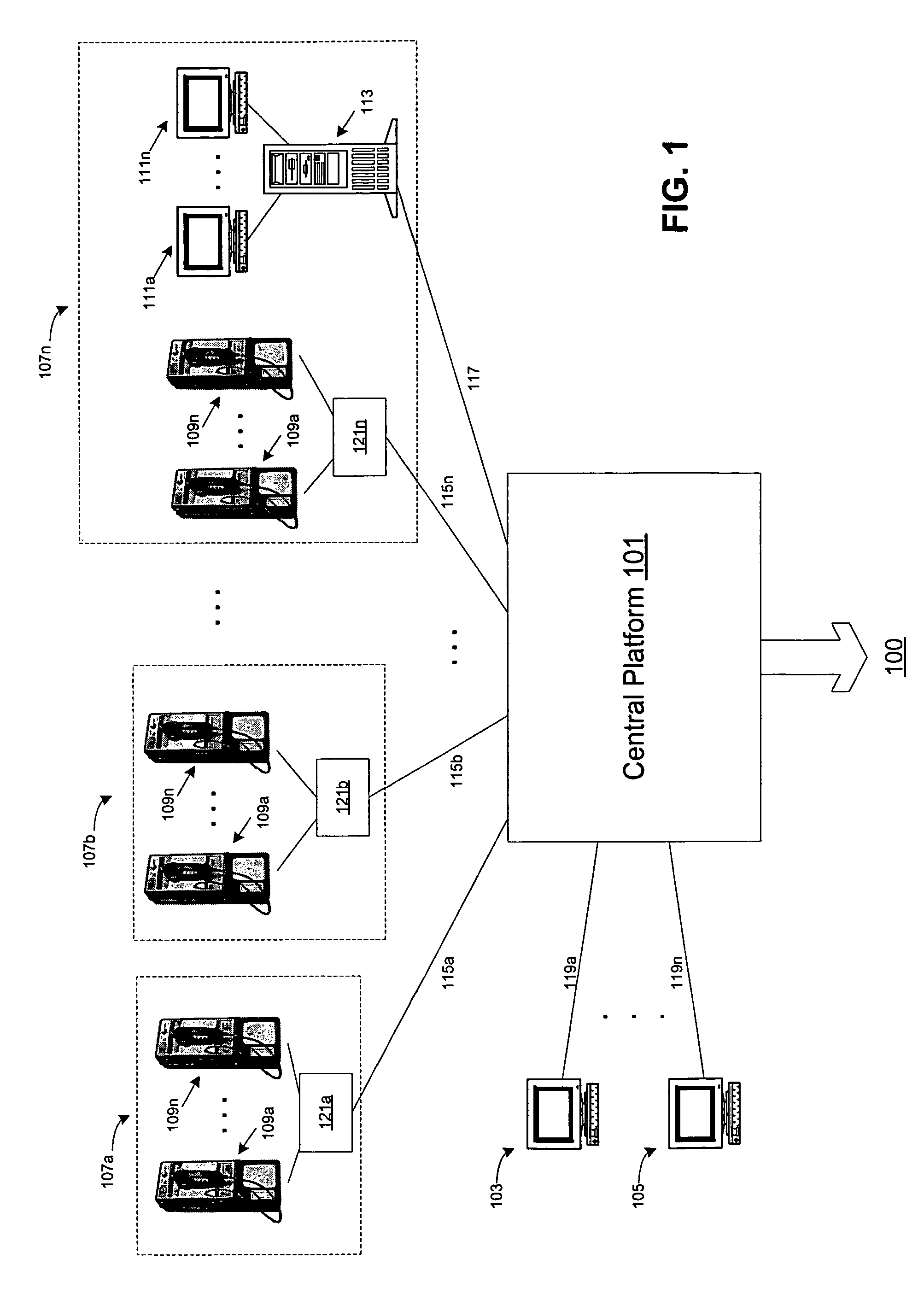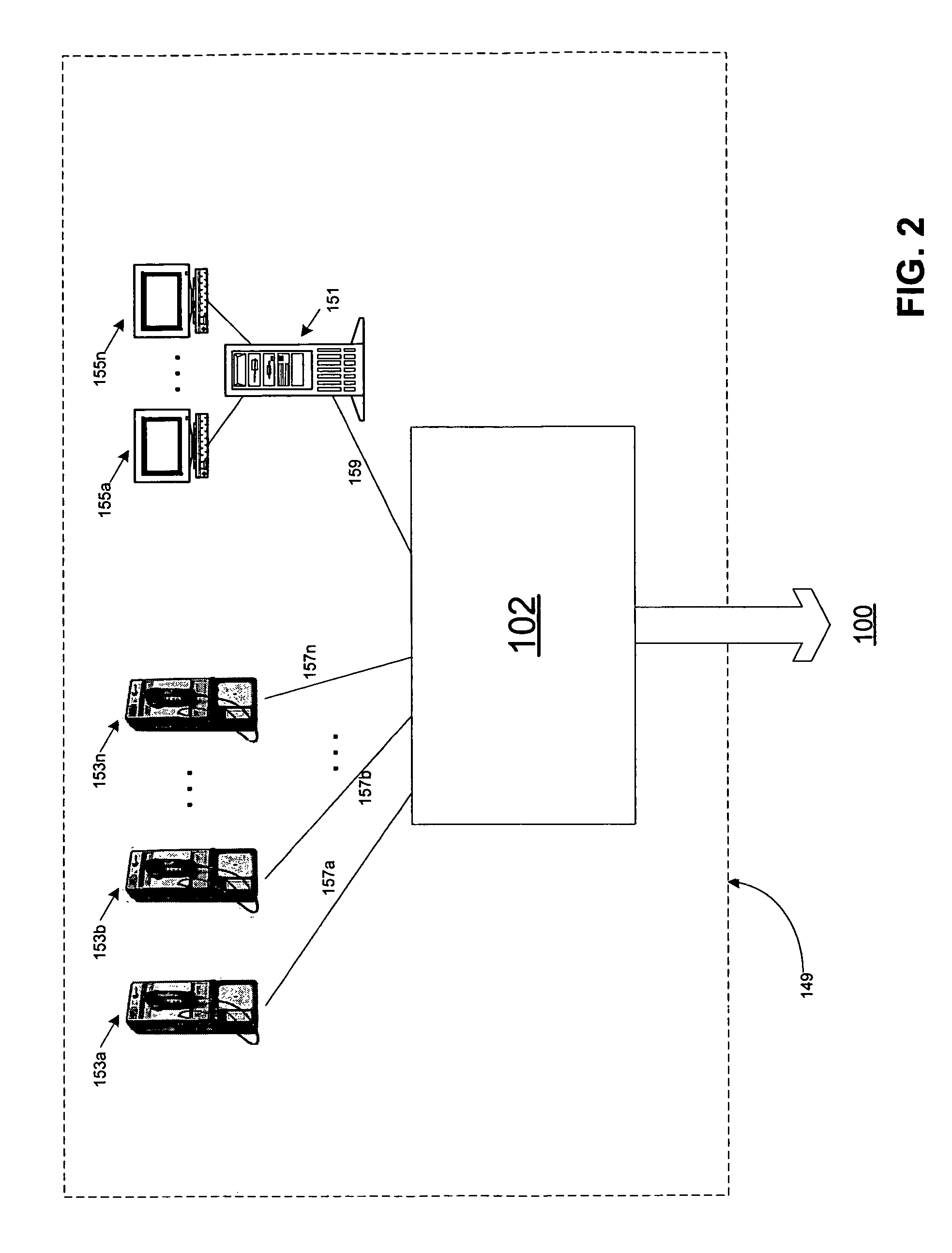Otherwise, unaccountable telephone costs would severely hinder the availability of the telephone systems in institutions.
Thus, the communication system used in a regulated institution must employ unique functions often unnecessary in other types of institutions.
Generally, these simple systems are not equipped to
restrict an inmate from calling an individual.
Without the necessary constraints on an inmate's use of the telephone system, inmates have often harassed outside parties or individuals.
However, a
primary problem with this identification method is the ease of obtaining another inmate's PIN.
For example, individuals who commonly forget their PIN may write it down, increasing the possibility that an unauthorized individual will view the PIN and use it.
In addition, if a PIN number is compromised and utilized by an unauthorized inmate, the unauthorized inmate may then be able to call certain individuals who are restricted to that inmate, since the unauthorized inmate is no longer using the proper PIN associated with that inmate.
In known systems, the PIN identification method is incapable of verifying that the individual who supplies the PIN is the actual specified inmate.
This method, however, provides only minimal additional protection because a
debit card and its associated PIN can often easily be taken from another inmate, or given to another inmate.
This provides an additional
security measure, but again is minimally secure because such information can easily be obtained in a correctional facility.
The system may also limit the amount of time each inmate / user is permitted to conduct each outbound
telephone call through the system.
For example, if an inmate misbehaves, the inmate's telephone privileges may be further limited or revoked completely.
It is also foreseeable that the telephone numbers of the family members of these specific individuals may also be blocked.
Some current systems also limit the use of specific long-distance carriers.
This feature prevents inmates from interacting with telephone games and lotteries, and in certain older systems, prevents the inmate from achieving an unrestricted dial tone.
However, systems known in the art have only used
biometrics to a limited extent.
The system attempts to locally automate and simplify the process of
payment for routing calls without live operator assistance, but does not address additional security concerns that may exist in specific facilities, such as in a penal institution.
Furthermore, it does not provide for protection measures to confirm that the individual supplying the account number is the individual entitled to the use of the account.
Additionally, the system does not provide any means of monitoring the conversations taking place or restricting which individuals are accessed by the user.
However, the system does not teach a means for selecting the call type or a call monitoring means.
It also fails to teach an advanced
verification means specific to a user.
The system fails to provide a selection means for the user, such as the ability to choose the type of call to be placed (e.g., collect, debit, international, etc.).
It also fails to teach any call monitoring means and would therefore be unacceptable as a communication system for a penal institution.
However, it does not teach a commissary system for use with a PSTN.
This system also fails to teach multiple
authentication means and would therefore be unacceptable for use in a penal institution.
However, the system does not allow for other types of calls, such as collect calls, to take place.
Furthermore, it fails to provide an advanced call monitoring apparatus with an advanced
authentication apparatus.
However, it does not identify or verify the individual speaking.
Furthermore, this system does not provide a means to identify the user or verify that the user is not partaking in fraudulent activities.
It also fails to teach of a monitoring and
call control means.
However, the system fails to disclose a means for incorporating biometric recognition in an institution telephone call system.
Furthermore, it fails to disclose a means for incorporating a WAN-based institution telephone
control system.
The system disclosed is further limited by its lack of telephone call monitoring ability and calling party identification means, and is therefore unsuitable for use in penal institutions.
However, the system fails to implement additional biometric means useful in identifying a called party and fails to apply these features to specific institutional functions.
It is limited by detection of certain sounds which may not be readily
machine-recognizable.
For example, it is foreseeable that interference,
background noise, or compressed
voice data may inhibit the detection of the tones.
However, it would be too costly to implement such a system in a penal institution or similar facility.
Although it contemplates other voice recognition methods, the system fails to address any other field of biometric recognition.
The invention is further limited by its inability to manage call restrictions and lacks monitoring capabilities.
However, it does not address restrictions to the system or further monitoring means during use of the system, which are essential for systems within a penal institution.
The system is limited in its ability for use in a telephonic system in a penal institution by the lack of monitoring or
call management abilities.
 Login to View More
Login to View More  Login to View More
Login to View More 


